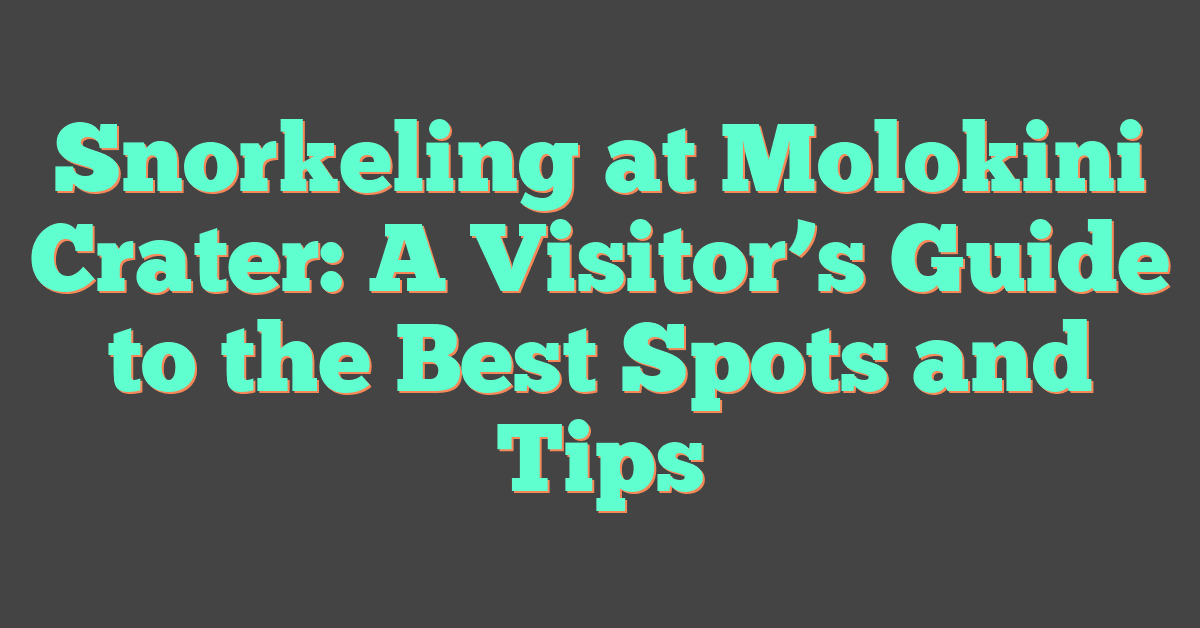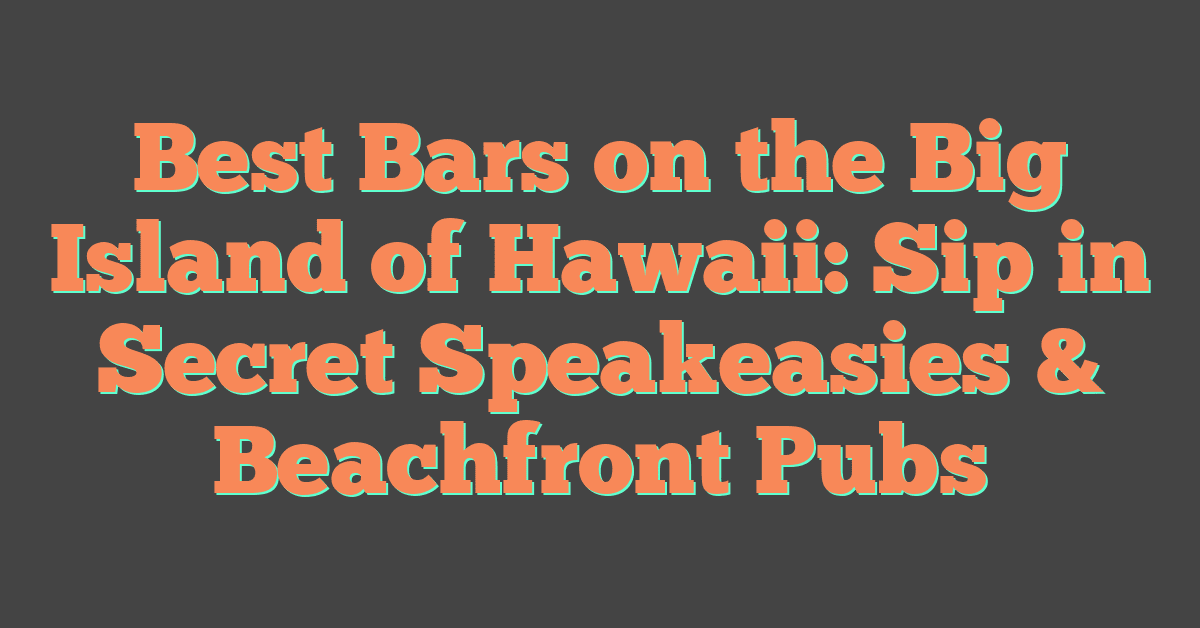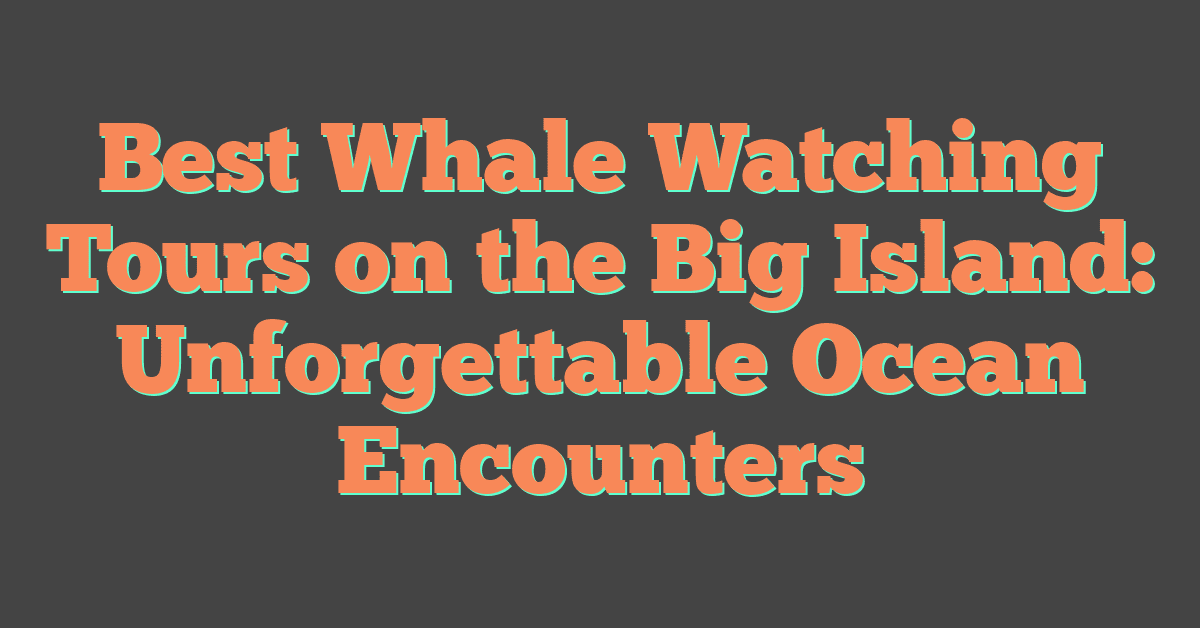Snorkeling at Molokini Crater is an unforgettable experience. This crescent-shaped crater sits just off the coast of Maui in Hawaii’s clear waters and is home to amazing marine life.

When you snorkel here, you can see colorful fish, healthy coral reefs, and sometimes even a sea turtle in a unique underwater world.

When I first heard about Molokini, I wondered if it was worth visiting. After my trip, I realized snorkeling at Molokini Crater is one of the best things to do in Maui if you love the ocean.
The visibility here is excellent, making it perfect for both beginners and experienced snorkelers.
If you’re planning a Hawaii vacation and want a fun adventure, add Molokini Crater to your list. With good weather, clear water, and easy boat access from Maui, it’s a popular spot.
You can find more information about snorkeling, the best tours, and what to expect at Molokini in this detailed guide.
Why Snorkeling at Molokini Crater Is Unique

Snorkeling at Molokini Crater lets me discover both natural history and vibrant marine life. The setting and visibility make each visit special compared to other outdoor activities in Hawaii.
Molokini’s Geological & Historical Significance
Molokini’s crescent shape comes from an ancient volcanic eruption that happened thousands of years ago. The crater rises about 160 feet above the ocean at its highest point.
Molokini is a partially submerged volcanic caldera, forming a half-moon rim above the water and creating a sheltered bay. Ancient Hawaiian fishers may have used Molokini for fishing.
Today, Molokini is a protected marine and bird reserve. Authorities manage the land and water around the crater, so it still feels wild and untouched.
If you want to learn more, check out this guide about the geological and historical background of Molokini Crater.
Crystal Clear Waters & Marine Life
The water at Molokini Crater is very clear. On good days, I can see up to 150 feet underwater.
This clarity makes it easy to spot colorful coral reefs, tropical fish, and other marine animals.
I often see butterflyfish, parrotfish, and sometimes moray eels or octopuses. Because Molokini is a protected marine reserve, fishing and collecting are not allowed.
The marine life here stays healthy and diverse.
Some tours give you the chance to see green sea turtles or gentle rays. For more details on marine life, check this guide to Snorkeling Molokini.
Quick List of What I See Most Often:
- Reef fish (e.g., tangs, wrasses, butterflyfish)
- Vibrant corals
- Occasional rays
- Eels and octopus
Uncrowded and Unhurried Adventure
Molokini Crater usually feels less crowded than other Maui spots. You need a short boat ride to get there, which keeps visitor numbers down.
Tour companies organize arrival times, so the area never feels packed. I can swim and explore the reefs at my own pace.
The crater’s shape shelters the bay, keeping the water calm. This makes it easier for me to float and look around.
Many visitors agree that this uncrowded experience makes Molokini special. For more on what makes this adventure so relaxed, read this guide to Molokini’s snorkeling experience.
Planning Your Molokini Snorkeling Trip

To snorkel at Molokini Crater, a little planning helps. Good timing, safety, and the right gear make the day smoother.
Best Time to Visit
Molokini Crater gets busiest in late morning and midday. I get the best snorkeling when I arrive early, before most tour boats.
Morning trips offer calmer water, clearer views, and fewer people. The wind often picks up around noon, making snorkeling harder and visibility lower.
Maui’s mild climate means you can snorkel year-round, but April through October is best. Winter swells or strong currents can close the site or make the water rough.
Most tours leave from Ma’alaea Harbor, Kihei, or Wailea. Schedules may change by season.
See more details at this Molokini snorkeling tours guide.
Physical Fitness and Safety Considerations
Snorkeling at Molokini requires some swimming. I always check my comfort level in open water before my trip.
Even if I’m new to snorkeling, I make sure I can swim calmly for about ten minutes at a time. Strong swimmers have more freedom, but beginners can join too.
Many tours provide flotation devices, and I let the crew know about my swimming skills before getting in the water. I listen to the safety briefing and follow crew instructions.
Sun and dehydration are easy to forget. I use reef-safe sunscreen and drink plenty of water.
I avoid touching coral or marine life to stay safe and protect the environment.
What to Bring for Your Snorkeling Adventure
Packing the right items makes snorkeling easier. Here’s what I always bring:
- Swimsuit, towel, and lightweight cover-up
- Reef-safe sunscreen
- Snorkeling gear (most tours provide this)
- Water and snacks
- Motion sickness medication if needed
- Waterproof bag for wet clothes and valuables
Sometimes I bring an underwater camera or GoPro. Most operators give me a snorkel set, but I check ahead. Some tours offer snacks or drinks, so I ask if that’s included.
For more on what to expect with tours and gear, see this Molokini snorkeling guide.
Choosing the Right Snorkeling Tour

Choosing the right snorkeling tour can make your Molokini trip much better. I look for quality, safety, good food, and clear policies.
Top Maui Snorkeling Tours & Providers
Several well-known companies offer trips to Molokini Crater. Some popular choices are Trilogy, Kai Kanani, Sail Maui, and Pride of Maui.
Most tours start early in the morning, which helps avoid crowds and enjoy calmer water.
Most tours leave from Ma’alaea Harbor, Kihei Small Boat Ramp, or beaches near Wailea. Some, like Kai Kanani, depart right from the beach.
I always check if the company uses a catamaran or another type of boat. Catamarans feel more stable and usually have more space.
Here’s a quick list of top providers and their main features:
| Provider | Boat Type | Notable Features |
|---|---|---|
| Trilogy | Catamaran | Early trips, comfort |
| Kai Kanani | Catamaran | Beach departure, quick to crater |
| Sail Maui | Catamaran | Smaller groups, relaxed vibe |
| Pride of Maui | Larger boat | Buffet meals, family friendly |
Reading current reviews and comparisons of Maui tours helps me choose the best company.
What’s Included: Gear, Meals & Extras
When I book a snorkeling tour, I check what’s included. Most tours provide a mask, snorkel, and fins.
Some offer flotation devices and wetsuit rentals for extra warmth.
Food is important, especially on longer cruises. Many tours serve a light breakfast and a hot lunch on board.
For example, trips with Pride of Maui include breakfast, snacks, and lunch buffets. Catamaran tours often have complimentary drinks, though some charge extra for alcoholic beverages.
Extras may include underwater cameras, guided fish talks, or a photographer. Contactless payments are becoming more common.
Cancellation Policy and COVID-19 Measures
I always read the cancellation policy before booking. Some Maui snorkeling tours allow free cancellation up to 24 or 48 hours in advance, while others may charge a fee.
COVID-19 measures are also important. Many tour companies require face masks on board, especially indoors.
Some may ask for proof of vaccination or a recent negative test. Many crews now do temperature checks and encourage social distancing.
If I have questions about safety or cancellation, I contact the company for the latest details.
The Molokini Snorkeling Experience
Snorkeling at Molokini Crater lets me see rare marine life, clear water, and unique underwater sights. Each part of the crater offers something different, from bright coral to swimming with turtles or colorful fish.
Snorkeling Conditions and Water Clarity
Every time I snorkel at Molokini, I notice the water is very clear. Visibility often reaches over 100 feet, so spotting marine life is easy.
The morning is best for calm seas and fewer people.
Molokini sits about three miles off Maui’s coast, so most snorkel tours leave early. The water inside the crescent is usually calm, which shelters me from strong currents and waves.
Outside the crescent, the water can be choppier and is better for advanced snorkelers.
I always check the weather before my trip. High winds can stir up the water and make conditions less ideal.
Wearing sunscreen and a rash guard helps protect my skin, as the sun can be strong even in the morning.
Popular Dive Sites Around the Crater
The inside of Molokini Crater offers the most popular spot for snorkeling. The sloping reef has plenty of coral and makes swimming easy for all skill levels.
Some tours visit spots like “The Back Wall.” This area has deeper drop-offs and larger marine animals, making it better for scuba divers than for casual snorkelers.
I find the inside rim more beginner-friendly. The outer wall looks stunning but can be risky because of strong currents.
Trips sometimes include a stop at “Turtle Town,” which is famous for Hawaiian green sea turtles. Snorkeling tours to Molokini leave from Ma’alaea Harbor, Kihei, and Wailea.
Each tour can visit different dive spots. Every site offers something unique to see.
Wildlife Encounters: Fish, Turtles & More
When I snorkel at Molokini, I see a wide variety of fish. Bright yellow tang, parrotfish, wrasses, and butterflyfish are easy to spot.
Sometimes, schools of small tuna swim by in deeper water. Green sea turtles live in nearby areas like Turtle Town, and tours often stop so I can watch these gentle creatures up close.
I always keep my distance to avoid disturbing them. The coral reef is also home to eels, sea urchins, and sometimes octopus.
During winter, I might spot whales and dolphins nearby. I always bring my underwater camera to capture the vibrant sights beneath the surface.
Exploring Nearby Attractions

When I visited Molokini Crater, I found more to explore in the area besides snorkeling. There are places with sea turtles, chances to watch whales in the right season, and a friendly Maui town with good food and shopping.
Turtle Town Adventures
After snorkeling at Molokini, I wanted to see turtles, so I went to Turtle Town. This stretch of coastline near Maluaka Beach is famous for Hawaiian green sea turtles.
The water here stays calm in the morning and is perfect for snorkeling. I noticed turtles resting or grazing on rocks just offshore.
Some tour boats visit both Molokini and Turtle Town in a single trip. When I go on my own, I always respect wildlife and keep my distance.
Besides turtles, I see colorful fish and healthy coral reefs. Early morning is the best time to visit before crowds arrive.
Snorkeling at Turtle Town gives me a quiet, laid-back experience compared to busier spots.
Whale Watching Opportunities
Maui has a special whale watching season from December to April. During these months, I can see humpback whales migrate and breed in the warm waters off Maui’s coast.
Tour boats leave from Ma’alaea Harbor or Kihei. I have watched whales breach, slap their tails, and swim with their calves.
Even from shore, I sometimes spot spouts or splashes in the distance. Whale watching tours include guides who explain whale behavior and what to look for.
The boats are comfortable and provide binoculars for better views. I feel safe on these trips, and many tours are good for families.
Sightseeing in Kihei and South Maui
After a day in the water, I like to spend time in Kihei. This town is a short drive from Molokini boat launch spots.
Kihei is easy to explore, with local restaurants, food trucks, and shops along the main roads. I often walk along the beaches, swim in calm areas, or relax at picnic tables.
For souvenirs or local shaved ice, I visit Azeka Shopping Center or smaller markets. South Maui’s scenery is beautiful, with palm trees, sandy beaches, and sunset views.
If I have more energy, I sometimes drive farther south to visit Wailea’s beach walks or explore secret coves.
Transportation, Parking & Accessibility

To get to Molokini Crater, I start by reaching the boat harbor. Planning ahead helps with parking, transportation, and accessibility.
Getting to the Harbor
Most boats leave from Maalaea Harbor. This harbor sits between Kihei and Lahaina, making it easy to reach from popular tourist spots.
Other launch points include Makena and the Kihei Boat Ramps. I usually drive to the harbor if I’m staying nearby.
Taxi and rideshare services like Uber and Lyft are common in Maui, which helps if I don’t have my own car. Some snorkeling tour companies offer shuttle pickups from hotels in the main resort areas.
I ask about shuttle options when booking a tour. If I need special accommodations, I look for tours with accessible boats or transportation.
Many larger boats have ramps and seating for wheelchairs and people with mobility challenges. I check this in advance since options can differ depending on the boat operator.
Parking Information
Maalaea Harbor has a public parking lot. The lot is paid, and I need a credit card or cash for the parking meter.
Parking costs can change, but it’s usually about $1 per hour or a flat rate for several hours.
Parking Tips:
- Arrive early, especially during busy months like summer or holidays, since spaces fill up fast.
- Some lots have special sections for disabled parking with easier access to the boat docks.
- I double-check tour instructions because some operators validate parking or give tips for nearby lots if the main one is full.
At the Kihei Boat Ramp and Makena landing areas, parking is more limited. Street parking nearby fills up quickly, so I allow extra time in case I need to walk.
It helps to bring only what I can easily carry and to avoid leaving valuables in the car.
Options for Public Transportation
Public transportation options for getting to the harbors are limited.
The Maui Bus system offers some service between larger towns and nearby areas. However, the bus stops are not always right at Maalaea Harbor or the boat ramps.
The bus schedules are not frequent, especially early in the morning when most snorkeling tours start.
If you prefer not to drive, taxis and rideshare apps are reliable choices. Request wheelchair-friendly transportation in advance, as not all taxis or rideshares have accessible vehicles.
Since most boats leave from Maalaea Harbor, confirm your pickup and drop-off points before your tour to avoid confusion.
Some snorkeling companies help arrange rides for larger groups. This is helpful if you are traveling with friends or family who don’t want to rent cars.
If public buses don’t fit your schedule or stop close enough, organizing a private ride is usually the best way to get to the dock on time.




